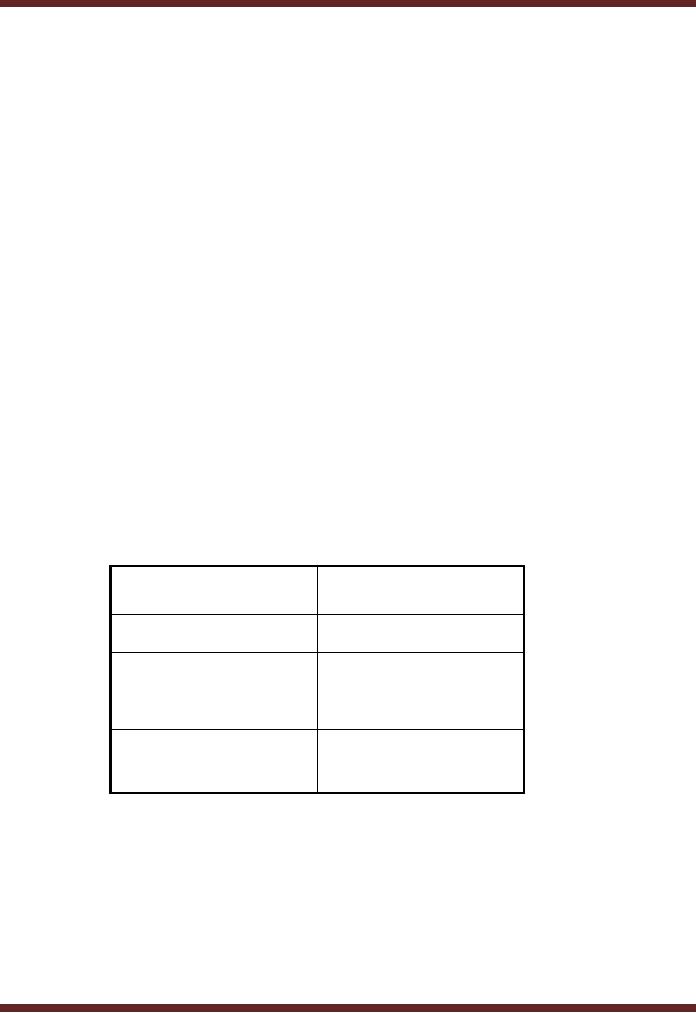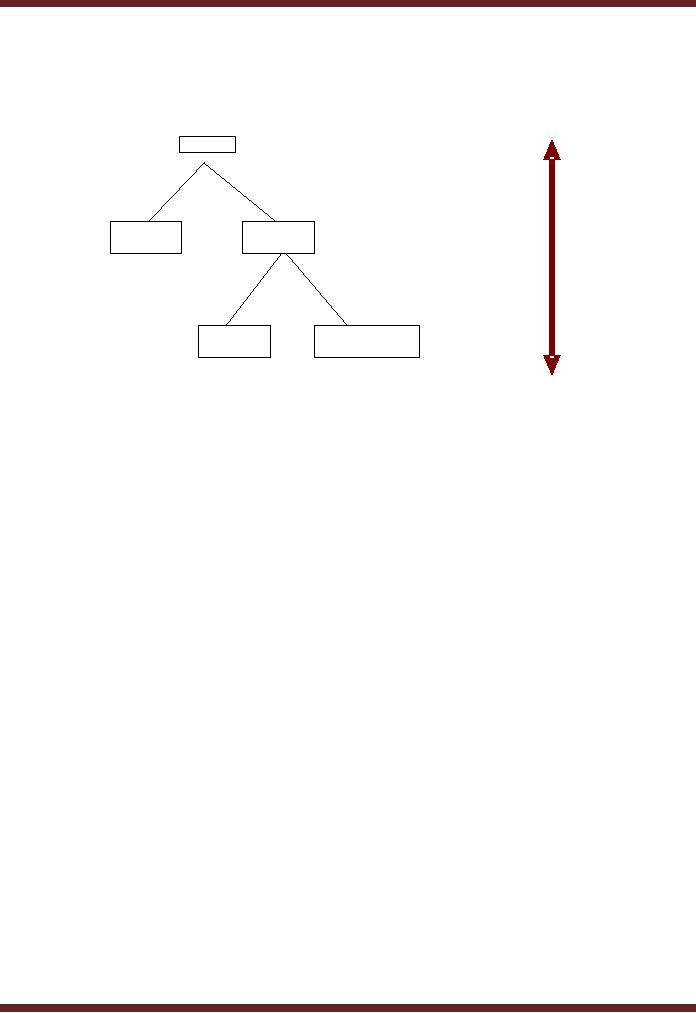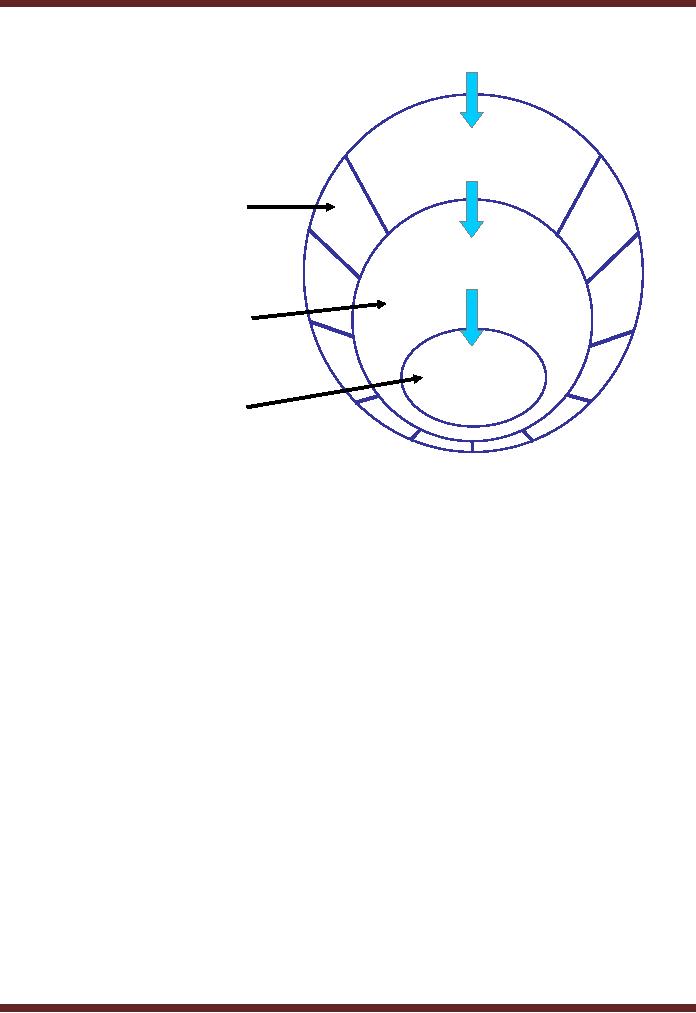 |

VU
Information
System (CS507)
LESSON
27
Object
Oriented Analysis and Design
There
are some terms important to
explaining the concept object oriented
analysis and design.
26.1
Object
An object
can be defined as "A concept,
abstraction, or thing with
crisp boundaries and meaning
of the
problem
at hand. Objects serve two
purposes, they promote understanding of the
real world and provide
a
practical
basis for computer
implementation."
Rumbaugh
et al. (1991)
26.2
Classes
A
class is defined as "The
purpose of a class is to specify a
classification of objects and to
specify the
features
that characterize the structure
and behavior of those
objects."
Attributes
& Methods
Attributes
are the characteristics of object / class
and methods are the operations
related to the object /
class.
In
order to explain concepts of Class,
Object, Attribute, Method, etc,
let's consider an example. A
company
may be
interested in creating a database
for better customer relationships.
For this purpose the
company
may
plan to create a database in the
following manner.
Example
Class
Customers
Object/Instance
A particular
customer
Attribute
Name,
Address, etc.
(Characteristics of
the
object)
Methods
(Operations Add, update,
delete,
related to
the objects) validate,
etc.
26.3
Inheritance
Inheritance
is usually identified by the phrase
"is a kind of." For
example, the term "automobile " is
a
generalization
of "van", "car", "truck",
and many others. Conversely,
we can say that since
cars are
automobiles
so they inherit all the properties common to
all the automobiles e.g.
engine, steering, etc.
but
capacity
and type of engine, size of
steering will be different
from each class, based on
these differences
sub-classes
are created. Two concepts
are used in relation to inheritance;
generalization and
specialization.
Classification
is hierarchical in nature, a vehicle
may be classified as truck or
car, a car may further be
Sub-
121

VU
Information
System (CS507)
classified
as hatchback or sedan or sports or
SUV. Moving up the hierarchy is
terms as generalization
and
down
the hierarchy is referred to as
specialization.
More
general
(Classes)
Vehicle
Truck
Car
Sedan
Sports
More
specialized
(subclasses)
A real
customer such as "ABC
Company" is an object/instance of the class of
customers. If you
have
different
kinds of customers, such as domestic,
commercial and industrial, you
can create three new
classes
of
customers that are derived
from of the Customer class.
These derived classes use inheritance to
gain
access
to all of the common customer class
attributes and methods. Special
attributes which are unique to
each
class can also be
defined.
Message-Passing
Several
objects may collaborate to fulfil
each system action. For
example, "Record CD sale" is a
process,
which
could involve a CD stock item, a sales
transaction, a sales assistant,
etc. These objects involved
in the
process
of CD sale communicate by sending
each other message.
26.4
Encapsulation
Encapsulation
means information hiding.
For instance, when the Play
Button is pressed, the tape is
played.
However
the actual process of how the
tape is played is not visible.
Another example can be given
of
banking
software. The banking
software contains an option of
computation of profit, when the option
is
activated
the amount is computed as and when required, however,
the actual steps when
performed remain
invisible
to the user.
26.5
Polymorphism
Following
example will help understand
the concept in a better manner.
122

VU
Information
System (CS507)
Message
from another
`Layers of an
onion'
object
requests a service.
model of an
object:
Operation
called only via
valid
operation
signature.
An outer
layer of
operation
signatures...
Data
accessed only by
object's
own operations.
...gives access to
middle
layer of
operations...
An object's
data
is
hidden
...which can
access
(encapsulated).
inner core
of data
Hence
based on the example given above, the
concept can be defined. Ppolymorphism is a derived
from
Greek
language meaning "having
multiple forms"). Polymorphism is the
characteristic of being able to
assign
a different meaning or usage to
something in different contexts -
specifically, to allow an entity
such
as a
variable, a method, or an object to have
more than one
form.
26.6
What is Business Process
Reengineering?
"Reengineering is
the fundamental rethinking and redesign
of business processes to achieve
dramatic
improvements in
critical, contemporary measures of performance,
such as cost, quality,
service and speed."
(Hammer &
Champy, 1993)
The
focus of this technique or method is to
smooth the procedures and approaches
undertaken by various
departments
of an organization to achieve their
respective objectives. The term
rethinking refers to the
idea
of
firstly studying and then
analyzing all or any of the
processes to any extent depending on the
need and
objective of
change. The objectives to be
achieved according to this definition
are to qualitatively
enhance
the efficiency
and quality of delivery and
production of goods and
services. to achieve
qualitative
improvement
in the handling of production, procedural
and customer related
matters.
The
concept of business process
reengineering can be understood in the
following manner.
"The
analysis and design of
workflow and processes
within and between
organizations"
(Davenport
and Short, 1990).
The
definition adds another aspect to the
definition. It extends the concept of
BPR by studying the links of
various
procedures used by and
between organizations. A number of
processes undertaken within
the
organization
may have links with external
organizations either as input or output.
For example, raw
material
purchases
from suppliers are an integral
part of planning, production
and sales. Hence making the
supplier
123

VU
Information
System (CS507)
more
efficient to deliver on time becomes
critical, industrial customers placing
regular huge volume
orders
in
accordance with theirs own
plans. You as the supplier need this
information to input into
your own
planning.
Competitive
Advantage
One of the
main goals of introducing
BPR is to provide a competitive
edge to the business and
that can
only
be achieved by providing a better product
in a timely fashion to the customers in
accordance with their
needs.
For
Example, a petroleum company might be
faced with issues such
as, the product is being tampered
with
before delivery to
points of sale, and the
gasoline is not being delivered on time to the
points of sale, the
issues
to be dealt at the dealer-owned-petrol pumps.
Question: Why should it be worried, if at
all?
The
company may after the process review
resolve the above stated
issues such as redefining the
design of
the
containers/tanker, installing tracking devices on the
delivery vehicles, setting up Company
owned points
of
sale, eliminating storage
depots and ensuring timely
direct deliveries to POS,
etc.
While
use of BPR helps an organization in
gaining competitive advantage in the use
of processes,
effectiveness
and efficiency should also be kept in
mind.
Effectiveness
By
effectiveness, it is meant that
how effective is the manner in
which the product or service is
offered to
the
customer? This may include
packaging, advertising, creating
customer loyalty, timely
availability in the
market,
understanding customer needs &
requirements related to the particular
product or service being
offered.
Efficiency
The
concept relates to not only
how efficiently a quality
product is manufactured, packed,
stored and
delivered to
customers/points of sale but also
how quickly are customer
complaints responded to, in
what
manner
are they removed, what is the cost of
not doing so as to be compared to the
cost of not doing
so,
and
how it can be made more
efficient. Efficiency is not
just about being efficient at the
production floor
level
but the decision making at management
level also has to be efficient.
Customer might not be able
to
see
all of the process but he
can see the efficiency coming out of
it.
Major
steps in BPR
Senior
managers may begin the task of
process alignment by a series of BPR
steps. These steps develop
a
self-reinforcing
cycle of commitment, communication, and culture
change. The steps may
include gaining
commitment to
change through the formulation of the
top team, developing a
shared vision and mission
of
the
business and of what change is required,
defining the measurable objectives,
which must be agreed
by
the
team, as being the quantifiable indicators of
success in terms of the mission,
identify the Critical Success
Factors
(CSF's) based on the mission of the
organization.
Following
steps should be followed to implement
BPR.
� Break
down the CSF's into the key
or critical business processes and
gain process ownership.
� Break
down the critical processes into
sub-processes, activities and task
and form the teams
around
these.
� Re-design,
monitor and adjust the
process-alignment in response to
difficulties in the change
process.
124
Table of Contents:
- Need for information, Sources of Information: Primary, Secondary, Tertiary Sources
- Data vs. Information, Information Quality Checklist
- Size of the Organization and Information Requirements
- Hierarchical organization, Organizational Structure, Culture of the Organization
- Elements of Environment: Legal, Economic, Social, Technological, Corporate social responsibility, Ethics
- Manual Vs Computerised Information Systems, Emerging Digital Firms
- Open-Loop System, Closed Loop System, Open Systems, Closed Systems, Level of Planning
- Components of a system, Types of Systems, Attributes of an IS/CBIS
- Infrastructure: Transaction Processing System, Management Information System
- Support Systems: Office Automation Systems, Decision Support Systems, Types of DSS
- Data Mart: Online Analytical Processing (OLAP), Types of Models Used in DSS
- Organizational Information Systems, Marketing Information Systems, Key CRM Tasks
- Manufacturing Information System, Inventory Sub System, Production Sub System, Quality Sub system
- Accounting & Financial Information Systems, Human Resource Information Systems
- Decision Making: Types of Problems, Type of Decisions
- Phases of decision-making: Intelligence Phase, Design Phase, Choice Phase, Implementation Phase
- Planning for System Development: Models Used for and Types of System Development Life-Cycle
- Project lifecycle vs. SDLC, Costs of Proposed System, Classic lifecycle Model
- Entity Relationship Diagram (ERD), Design of the information flow, data base, User Interface
- Incremental Model: Evaluation, Incremental vs. Iterative
- Spiral Model: Determine Objectives, Alternatives and Constraints, Prototyping
- System Analysis: Systems Analyst, System Design, Designing user interface
- System Analysis & Design Methods, Structured Analysis and Design, Flow Chart
- Symbols used for flow charts: Good Practices, Data Flow Diagram
- Rules for DFD’s: Entity Relationship Diagram
- Symbols: Object-Orientation, Object Oriented Analysis
- Object Oriented Analysis and Design: Object, Classes, Inheritance, Encapsulation, Polymorphism
- Critical Success Factors (CSF): CSF vs. Key Performance Indicator, Centralized vs. Distributed Processing
- Security of Information System: Security Issues, Objective, Scope, Policy, Program
- Threat Identification: Types of Threats, Control Analysis, Impact analysis, Occurrence of threat
- Control Adjustment: cost effective Security, Roles & Responsibility, Report Preparation
- Physical vs. Logical access, Viruses, Sources of Transmissions, Technical controls
- Antivirus software: Scanners, Active monitors, Behavior blockers, Logical intrusion, Best Password practices, Firewall
- Types of Controls: Access Controls, Cryptography, Biometrics
- Audit trails and logs: Audit trails and types of errors, IS audit, Parameters of IS audit
- Risk Management: Phases, focal Point, System Characterization, Vulnerability Assessment
- Control Analysis: Likelihood Determination, Impact Analysis, Risk Determination, Results Documentation
- Risk Management: Business Continuity Planning, Components, Phases of BCP, Business Impact Analysis (BIA)
- Web Security: Passive attacks, Active Attacks, Methods to avoid internet attacks
- Internet Security Controls, Firewall Security SystemsIntrusion Detection Systems, Components of IDS, Digital Certificates
- Commerce vs. E-Business, Business to Consumer (B2C), Electronic Data Interchange (EDI), E-Government
- Supply Chain Management: Integrating systems, Methods, Using SCM Software
- Using ERP Software, Evolution of ERP, Business Objectives and IT
- ERP & E-commerce, ERP & CRM, ERP– Ownership and sponsor ship
- Ethics in IS: Threats to Privacy, Electronic Surveillance, Data Profiling, TRIPS, Workplace Monitoring